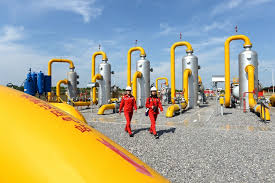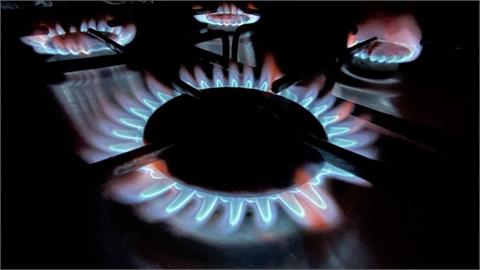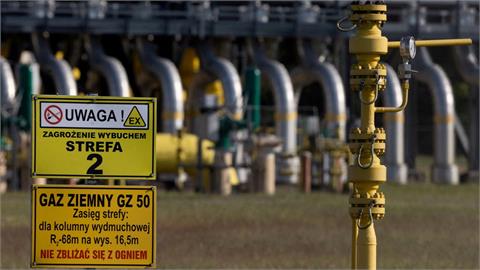by Norazlina Jumaat Gas demand to grow at slower pace Add up to 21.5 mil mt/year new LNG terminal capacity in 2022 Price pressures to curb downstream demand, LNG spot volumes
China's natural gas demand will continue to rise in 2022, but the growth rate is expected to be slower than that in 2021, dampened by economic pressures and high spot LNG prices, analysts and market sources said.
"A weaker macroeconomic backdrop in China, with GDP forecast to decline from 8% in 2021 to 5.1% in 2022, alongside a near record high spot LNG pricing environment curtailing some price sensitive industrial demand over Q1 2022, means Chinese total natural gas demand is expected to grow at a slower rate compared to historic levels," Szehwei Yeo, LNG analyst at S&P Global Platts Analytics, said.
National oil company Sinopec expects Chinese natural gas demand to reach 395 Bcm in 2022, up 7% from an estimated 370 Bcm in 2021, according to its research arm, Sinopec Economics & Development Research Institute. This growth rate will be slower than the 12.8% in 2021 and compares with demand of 328 Bcm in 2020, according to the National Energy Administration data.
China's total gas consumption was forecast to reach 430-450 Bcm in 2025, the NEA said in its 2021 natural gas development report. This implies demand will ease to single-digit percentage growth in the next four years.
LNG import capacity
China will bolster its position as the world's largest LNG importer, and could add as much as 21.5 million mt/year of LNG receiving capacity in 2022, more than the 14 million mt/year added in 2021 and 7.85 million/year in 2020.
This comprises eight new LNG terminal projects and two expansion projects, which will take China's total LNG receiving capacity to over 127 million mt/year in 2022 if all the projects are on schedule, up from 105.8 million mt/year at end-2021.
One of the largest projects expected to start in H2 2022 is Phase 1 of Suntien Green Energy's Caofeidian LNG terminal in the northern Hebei province, which has a total planned capacity of 5 million mt/year. In December, Suntien Green Energy signed a deal with Qatargas for 1 million mt/year of LNG for 15 years.
Hong Kong- and Shanghai-listed Suntien is a Hebei provincial government controlled natural gas distributor and wind power producer, and its new terminal underscores the growing trend of second-tier energy companies driving China's future LNG imports.
However, like natural gas demand, China's LNG import growth in 2022 may slow down as well.
With sustained growth in domestic production and the ongoing ramp-up in pipeline imports from Russia via the Power of Siberia, room for LNG import growth in 2022 shrinks, Yeo said.
China's annual LNG imports are expected to increase by around 8 billion cu m in 2022, lower than the 16 billion cu m expected for 2021 and the five-year average annual increase of 14 billion cu m, according to Platts Analytics.
Price pressures
Yeo said higher global gas prices are likely to continue to weigh on Chinese downstream demand, at least through Q1, and could continue to hinder Chinese spot procurement in 2022.
"However, with contractual supply increasing by an estimated 8.14 million mt/year in 2022, excluding the Venture global deals, and 21 million mt/year of new regasification capacity expected to come online, there remains momentum behind LNG import growth, even if spot exposure is falling," she said.
"Watch for continued interest from Chinese buyers in signing mid to long term SPAs/tenders indexed to oil or [Henry Hub] given that spot JKM prices are expected to remain elevated above oil indexed levels through 2022," Yeo added.
"As such, developments in Europe will be critical in setting the spot price of LNG in Asia, highlighting the integrated nature of today's global gas markets," she said.
Meanwhile, market participants said high gas prices forced many factories to shut down permanently in 2021, and these private enterprises have most likely switched industries, resulting in demand destruction for natural gas.
"China's LNG imports, especially spot LNG imports is expected to reduce obviously in 2022 as importers would try to avoid big losses caused by import costs higher than domestic sales prices," a Beijing-based source said.
The high gas prices mean that many smaller LNG companies may not seek LNG terminal slots from state infrastructure company PipeChina in 2022, which could become problematic as the liberalization of China's gas market and third-party access to state LNG terminals were a big indicator of gas demand.
Early market charter indicated that many slots at PipeChina's Tianjin LNG terminal have not found takers for 2022, a market source said, noting that most Chinese firms were looking to minimize spot procurement activity, while maximizing long-term volumes with suppliers in 2022.
One fundamental support for Chinese gas demand in 2022 will be industrial users in many provinces switching from coal to gas, and suppliers like Cheniere getting more LNG cargo inquiries from power generation companies and even chemical companies, in addition to city gas and industrial users.
State-owned PetroChina will also increase natural gas imports from Russia via the Power of Siberia pipeline to 43 million cu m/d in 2022, up 54% from 28 million cu m/day in 2021.
(spglobal.com, 12 January, 2022)




